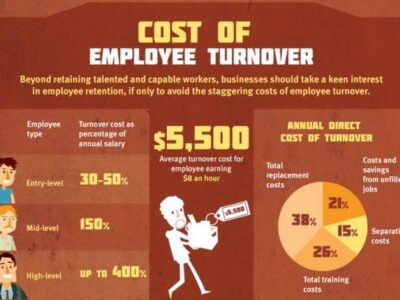Approximately 18% of the workforce in the United States identifies as actively disengaged employees according to a 2024 study from Gallup. What’s more is that just 21% of employees globally say they’re engaged at work, which leaves almost 80% of the workforce passively disengaged.
Employee disengagement leads to higher turnover rates, which is bad news for businesses. So what’s an employer to do?
The solution is actually pretty accessible when you understand the causes of low employee engagement. We’ll cover that before diving into some of the most effective methods of re-engaging your employees, improving morale, and boosting team efficacy.
How Much Does Employee Disengagement Matter?
The short answer to this question? A lot. Companies with highly engaged employees earn 147% more per share than their peers. And if that doesn’t convince you, here’s more on the impact of engagement by the numbers:
- 65% less turnover in low-turnover organizations
- 25% less turnover in high-turnover organizations
- 37% less absenteeism
- 41% fewer quality defects
- 48% fewer safety incidents
Pretty compelling, right? We think so, but many organizations struggle to address disengaged employees. Improving engagement often gets pushed aside for more immediate concerns, but the data shows this is a costly mistake.
Causes of Low Employee Engagement
Employee disengagement isn’t random chance, and it doesn’t occur in a vacuum. Understanding the internal and external causes of disengaged employees is the first step to solving the problem.
But before we jump in, let’s view work through the eyes of someone who’s disengaged at work. Consider this quote from Oprah:
“What happens when you work hard at something unfulfilling? It drains your spirit. It robs you of your life force. You end up depleted, depressed, and angry.”
These powerful words exemplify why addressing the root of disengagement is essential. Keep them in mind as you explore some of the most common causes of actively disengaged employees to really wrap your mind around what’s happening here:
Unsatisfactory pay: Employees disengage when they aren’t generously (or at least fairly) compensated for their work and time. Most will look for higher-paying opportunities, which means a higher turnover rate for their employer.
Lack of career development opportunities: Another thing that leads to checked-out employees is a lack of opportunities to learn new things and advance. Establishing employee development plans for each team member typically improves engagement and reduces turnover.
Poor management: People don’t quit companies—they quit managers. Absentee leaders, for example, are often emotionally disengaged. This causes a lack of connection, low morale, elevated stress levels, and disengagement in their teams.
Stressful work environment: Nearly half of all employees in 2024 feel burned out, and 60% of employees say work adds a significant amount of stress to their lives. Burnout leads to high turnover rates and actively disengaged employees for obvious reasons, especially if you’re still keeping that quote in mind.
The lesson? Make sure your employees aren’t working hard at something unfulfilling in a poor environment with no clear path ahead. Because if they are, it’ll eventually drain their motivation and they’ll stop putting in hard work. Then, when they’re depressed and angry enough, they’ll leave for greener pastures.
5 Common Signs of Employee Disengagement and How to Address Them
Disengaged employees hurt team morale. One of the top side effects of low morale in the workplace is employee disengagement. Yeah, it’s a dangerous cycle. Unless you address the problem of disengagement at work, it’ll spread like a nasty virus through your company. Once it catches, company culture, profits, and productivity tend to plummet.
Just like combating sickness in daily life, the solution is to take proactive measures. Here are some signs of disengaged staff members and methods you can use to re-engage them.
1. Absenteeism
Disengaged employees often show up late to meetings and miss group activities. They also tend to call in sick more often than engaged employees. If absenteeism is becoming common for a particular employee, they may be disengaged or on the path to it.
Solution:
- Talk to your employees: Sound simple? That’s because it is. Conversations are among the most important things you can do as a manager.
- Listen with empathy: When your employee starts talking, listen up! Try to understand why they’re absent from work. For example, your employee might be going through a difficult time in their personal life. If that’s the case, show empathy and support, person to person.
- Ask questions: After you hear them out, ask questions to get to the heart of the issue, listen some more, and repeat.
- Provide concrete support: Mental health resources and flexible scheduling often help improve absenteeism—if you think it’d help even one employee, consider offering it to everyone as a preventative measure.
- Incentivize: Don’t forget to implement rewards for good attendance or advancement opportunities for work-related issues.
Pro tip: Nothing brings teams together like fun! Try some team bonding games to turn the workplace into somewhere your employees actually want to be.
2. Negative Attitude
Disengaged workers are often rude and disrespectful toward their coworkers, and this impacts the entire team. It also decreases morale and productivity, and this disruptive behavior causes a ripple effect.
Solution:
- Chat with other team members: Talk to the employees who’ve noticed the behavior first. Get specifics about the behavior so you can present direct examples.
- Talk to the employee in question: Address their behavior with a private, judgment-free conversation.
- Listen up: Actively listen to the employee’s responses so you can understand why they’re acting out.
- Identify issues together: Work with the team member to identify underlying problems. Is there team tension? Would they benefit from training about how to communicate effectively?
- Create a plan: Pitch some clear steps forward to the employee in question and then put your plan into action.
Pro tip: Learning the art of effective feedback for conversations like this can reduce the risk of your employees getting defensive when you sit down to talk. Trust us, it’s a game-changer for anyone who needs to address workplace attitude issues (and most employers will at some point).
3. Evasive Behavior
Disengaged employees have a habit of finding creative reasons to get out of team interactions. This might sound like absenteeism, but it’s different—these employees often physically attend meetings but fail to participate and contribute.
For example, some disengaged employees constantly dodge team projects and avoid activities that require team collaboration.
Solution:
- Start with a conversation: Yes, again. Ask questions to determine if the employee’s disengagement is the result of a personal matter or if it’s related to work.
- Adjust your group settings: Listen to what they have to say and adjust accordingly. For example, quieter folks often feel more comfortable speaking up in smaller groups.
- Offer new ways to contribute: Some people just don’t feel comfortable speaking up—consider offering suggestion boxes, written feedback prompts, and other ways to contribute.
- Address workplace issues: Some evasive employees might be dealing with burnout, a toxic work environment, or bad behavior from a manager. Identify these issues so you can address them.
Pro tip: Break down those barriers with TeamBonding’s Essential Pieces program! It’s a proven method that helps teams feel more comfortable working together and speaking up.
4. Lack of Enthusiasm
When an employee feels disengaged at work, their enthusiasm plummets. They often no longer feel valued within the organization and do the bare minimum whenever possible. If you see this behavior, it’s a sign that the employee has become disengaged, which leads to lower productivity that could impact your bottom line if it spreads (and it likely will).
Solution:
- Have a casual conversation: Have an empathetic conversation about what gets the disengaged employee excited about work and then show them appreciation for this communication.
- Focus on work-life balance: Make sure employees have enough work-life balance to recharge and come to the workplace with energy.
- Get the team involved: Consider organizing a debate where every team member can give ideas on how to improve the workplace. Don’t forget to incentivize participation!
- Mix it up: Try new team-building strategies. For example, charitable team building helps your team build meaningful connections as they rally behind a cause together.
Pro tip: Our Donation Station program is perfect for that final step! Nothing builds honest enthusiasm and energizes teams like giving back to the world together.
5. Unwillingness to Expand Their Skills
Today’s employees have to upskill to stay competitive and relevant. Disengaged employees are often unwilling to expand their skills and grow within the organization. When your employees stop growing, you’ll start falling behind—low-quality talent and disengaged staff members are never good for business.
Solution:
- Ask questions: You know the drill by now—start by talking to the employee. Asking questions about what motivates them to learn skills and what’s holding them back.
- Make learning accessible: Foster a company culture of learning and make it fun (no boring training videos, please!).
- Cover the costs: Pay for employees to take advantage of opportunities to expand their knowledge and skills.
- Celebrate: Show your employees how their work benefits the team and celebrate it. Everyone deserves to feel like an essential piece of the puzzle and get rewarded accordingly.
Pro tip: Prioritize employee skill development and blend it with team building to double the impact. People who learn together grow together.
Turn the Tide: It’s Time to Engage Your Disengaged Employees
Re-engaging disengaged employees isn’t something you do overnight. It requires a long-term, strategic approach.
The first step is to identify the root causes of dissatisfaction among your employees and then talk to them. Use this information to implement targeted solutions that speak to your staff members’ needs. Every step toward engagement builds stronger, more resilient, and motivated teams.
Breaking away from old routines is often the best way to spark renewed employee engagement. Team building events can be game changers and are fantastic ways to kick off new company culture initiatives. At TeamBonding, we have decades of experience in crafting programs to turn disengaged employees into enthusiastic team members.
Ready to reignite your team’s passion and enthusiasm? Explore our collection of innovative team building experiences designed to strengthen connections and create the kind of workplace that naturally fosters employee engagement.
















